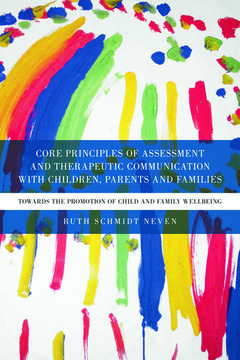Archaeology (5th Ed.) An Introduction
Auteurs : Greene Kevin, Moore Tom

Archaeology: An Introduction looks behind the popular aspects of archaeology such as the discovery and excavation of sites, the study of human remains and animal bones, radiocarbon dating, museums and 'heritage' displays, and reveals the methods used by archaeologists. It also explains how the subject emerged from an amateur pursuit in the eighteenth century into a serious discipline, and explores changing fashions in interpretation in recent decades.
This fifth edition has been updated by a new co-author, Tom Moore, and continues to include key references and guidance to help new readers find their way through the ever expanding range of archaeological publications. It conveys the excitement of new archaeological discoveries that appear on television or in newspapers while helping readers to evaluate them by explaining the methods and theories that lie behind them. Above all, while serving as a lucid textbook, it remains a very accessible account that will interest a wide readership. In addition to drawing upon examples and case studies from many regions of the world and periods of the past, it incorporates the authors' own fieldwork, research and teaching and features a new four-colour text design and colour illustrations plus an additional 50 topic boxes.
The comprehensive glossary and bibliography are complemented by a support website hosted by Routledge to assist further study and wider learning. It includes chapter overviews, a testbank of questions, powerpoint discussion questions, web-links to support material for every chapter plus an online glossary and image bank.
New to the fifth edition:
- inclusion of the latest survey techniques
- updated material on the development in dating, DNA analysis, isotopes and population movement
- coverage of new themes such as identity and personhood
- how different societies are defined from an anthropological point of view and the implications of this for archaeological interpretation
- the impact of climate change and sustainability on heritage management
- more on the history of archaeology
Visit the companion website at www.routledge.com/textbooks/greene for additional resources, including:
- chapter overviews
- a testbank of questions
- PowerPoint discussion questions
- links to support material for every chapter
- an online glossary and image bank
List of illustrations. Preface. Acknowledgements. Part 1: The Idea of the Past 1. The intellectual history of archaeology 2. The emergence of archaeological methods 3. The recognition and study of artefacts 4. Human origins 5. From hunting to farming 6. The discovery of civilizations 7. Achievements of early archaeology 8. Guide to further reading Part 2: Discovery and Investigation 1. Sites or landscapes? 2. Field archaeology 3. Remote sensing 4. Geographical information systems (GIS) 5. Landscape archaeology 6. Conclusions 7. Guide to further reading Part 3: Excavation 1. The development of excavation techniques 2. The interpretation of stratification 3. Planning an excavation 4. Excavation strategy 5. Records, archives and publication 6. Guide to further reading Part 4: Dating the Past 1. Background 2. Typology and cross-dating 3. Historical dating 4. Scientific dating techniques 5. Absolute techniques 6. Derivative techniques 7. The authenticity of artefacts 8. Conclusions 9. Guide to further reading Part 5: Archaeological Science 1. The nature of science 2. The environment 3. Climate 4. The geosphere 5. The biosphere 6. Humans 7. Artefacts and raw materials 8. Conservation 9. Statistics 10. Experimental archaeology 11. Conclusions 12. Guide to further reading Part 6: Making Sense of the Past 1. Where is archaeology at the beginning of the twenty-first century? 2. Archaeological theory 3. Towards processual archaeology 4. Towards postprocessual archaeology 5. Interpretive archaeology 6. Archaeology and the public 7. Conclusion 8. Guide to further reading Glossary Bibliography Index 50 new topic boxes integrated into chapters.
Ruth Schmidt Neven is a child psychotherapist, psychologist and researcher. She trained at the Tavistock Clinic in London and has worked with children, parents and families over four decades in the United Kingdom and Australia. She writes and lectures extensively on all aspects of child and family development and is currently director of the Centre for Child and Family Development in Melbourne.
Date de parution : 05-2010
15.6x23.4 cm
Date de parution : 05-2010
15.6x23.4 cm
Thème d’Archaeology :
Mots-clés :
DNA Evidence; Tree Rings; key; Archaeological Site; references; Open Area Excavation; iron; Ancient DNA; age; Modern DNA; radiocarbon; Boucher De Perthes; dating; Raw Material; tree; Postprocessual Archaeology; rings; Radiocarbon Dating; marine; Uranium Series Dating; isotope; HLC; Landscape Archaeology; GPR; Historic Environment Record; St Thomas Aquinas; Earth’s Magnetic Eld; Interpretive Archaeology; Tree Ring Dating; Murray 1999b; AMS Radiocarbon Date; Field Survey; Moisture Content; Archaeological Science; Obsidian Hydration Dating
